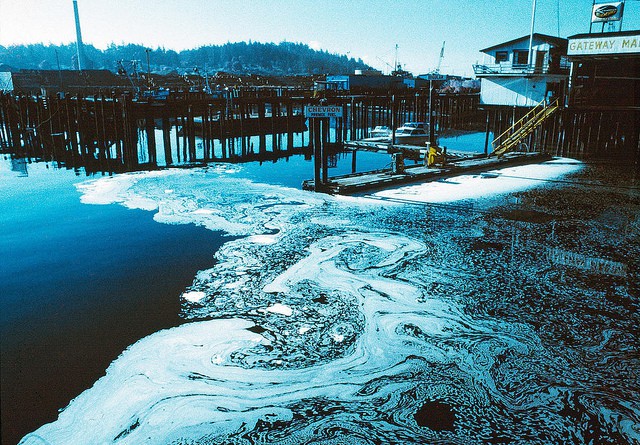Water remains one of the basic necessities in our daily lives. Nonetheless, accessing clean water is increasingly becoming a challenge, owing to the high level of water pollution.
As irresponsible waste management continues to thrive in our society, water is one of the most affected. Consequently, people are beginning to contract serious water-borne diseases from it.
In fact, the vast majority of people around the world have at one point been victims of the diseases caused by water pollution, either after consuming or bathing in polluted water.
And sometimes, diseases occur through indirect contact; it can be through consuming plant or animal food that lives or has been raised by polluted water. Here are 17 critical and grievous diseases caused by water pollution.
1. Cholera
Cholera is a serious intestinal tract infection caused by bacteria called vibrio cholerae. This water-borne disease is estimated to affect about 1.3 to 4 million people yearly, with about 21,000 to 143,000 people dying from it.
An individual contracts cholera by ingesting food or water that has been exposed to the chorela bacteria. Once contracted, the manifestations can be mild, but as already seen, the bacteria has the potential to even cause death.
The symptoms of cholera include vomiting, headache, and abdominal cramps. The disease is highly contagious, spreading through contact with feces from an infected person.
2. Diarrhea

Diarrhea is a disease that causes frequent and watery bowel movements. It manifests as a result of intestinal infection or food poisoning by drinking contaminated water with pathogens from animal or human waste.
In most cases, it is caused by water-borne bacteria, viruses and protozoans and is one of the common diseases caused by water pollution. While it’s a short-lived illness, diarrhea leads to dehydration, loss of electrolytes, and death in infants and young children.
3. Typhoid
Typhoid is a serious bacterial infection distinguished by acute intestinal ulceration and infection. The bacteria responsible for the infection is known as Salmonella typhi.
It usually affects one by washing or consuming contaminated water or ingesting food washed with contaminated water.
Its symptoms include nausea, loss of appetite and headache, and affects approximately 12 million people worldwide every year, with an average of 110000 people dying from it.
4. Amoebiasis (Traveller’s Diarrhea)
Just like diarrhea, Amoebiasis is among the most prevalent diseases caused by water pollution. Dubbed the “Traveller’s Diarrhea”, one gets Amoebiasis by consuming water contaminated with amoeba protozoa.
The disease-causing microorganism attacks the large intestines, but it can also cause trouble to the liver, heart, lungs, brain, and other organs.
Amoebiasis symptoms include mild or severe diarrhea with mucus and blood. The likelihood of acquiring amoebiasis is increased due to using contaminated water by sewage, poor hygiene, consumption of non-treated water and the presence of flies.
5. Dysentery
Dysentery is an intestinal infection marked by acute diarrhea with blood and mucus. The disease can also cause vomiting, fever and abdominal pain.
This gastrointestinal disease is acquired when one washes with or consumes contaminated water or food. It is a bacterial disease that can be prevented by drinking clean water and maintaining good hygiene.
You should also avoid sharing personal items such as toothbrushes and drinking glasses, and towels, as the disease can easily be passed through these mediums.
6. Schistosomiasis (Bilharzia)
Schistosomiasis (Bilharzia) is caused by parasitic worms that develop in water. Hence, whenever the worms are in a water body, they can penetrate the skin of those washing, swimming or wading in the contaminated water.
Once in the body, they can cause infections and damage to the intestines, bladder, and liver. Some types of freshwater snails may also carry the schistosomiasis worms and eggs. The disease affects about 200 million globally.
7. Cancer
Waters heavily polluted with chemicals such as MTBE and chlorinated solvents increase the risks of getting cancer when one drinks from such water sources.
The chemicals damage the DNA, which causes cancer tumors. The disease is associated with high medical treatment costs, chronic pain, and death. Cancer has claimed the lives of many people across the world.
8. Hepatitis
Hepatitis is a highly infectious disease that affects the liver. It is acquired through ingestion of water contaminated with the hepatitis virus. Eating food washed with contaminated water can also spread the disease.
Its symptoms include abdominal pain, jaundice, depression, fatigue, nausea, weight loss, loss of appetite, and fever, and they’ll usually manifest 2 weeks to 6 months after exposure.
9. Intestinal Worms

Intestinal worms are parasites that can be transmitted by drinking contaminated water or consuming food washed with contaminated water. Some of these intestinal worms include whipworms, hookworms, and roundworms/helminthes.
The worms are responsible for retarded growth, anemia and malnutrition, especially in children. Intestinal worms affect about 1.7 billion people worldwide every year, with the majority being children.
10. Dracunculiasis (Guinea Worm Disease)
Dracunculiasis is among the serious diseases caused by water pollution. It is also called Guinea Worm Disease and is very common in Africa.
A person is infected by the worms after drinking water contaminated with the larvae. The larvae then develop into a full-grown adult worm and later get out of the body after approximately one year.
A fully grown Guinea Worm can extend up to a meter long, and upon leaving the body, they leave one with incapacitating ulcers.
11. Lead Poisoning
The contamination of water with lead either from old pipes or the discharge of hazardous chemicals into water systems can cause lead poisoning. This makes it one of the life-threatening diseases caused by water pollution.
Children are at the greatest risk because when the metal gets into their bodies at elevated levels, it results in numerous health problems such as anemia, problems with the reproductive system, and high blood pressure.
Lead poising also has the potential to cause serious organ damage, especially to the kidneys and the nervous system.
12. Fluorosis
Fluorosis is a condition that negatively affects the health of teeth and bones as a result of consuming groundwater with high concentrations of fluoride chemicals.
The chemical occurs naturally in groundwater, and the disease affects more the 25 countries globally. It is estimated that tens of millions of people are affected by the disease worldwide.
13. Arsenicosis
Arsenicosis is a condition caused by chronic consumption of chemically polluted drinking water with small amounts of arsenic. Chemical poisoning by arsenic takes place over the long-term, and exposure to the chemical contributes to cancer of the bladder, skin, kidneys, and lungs.
The disease affects about 140 million people, with about 50 countries having water containing potentially dangerous levels of arsenic. The symptoms of the disease include problems with the bladder, kidney, lungs and skin (keratosis), which may advance into cancer.
14. Polio (Infantile Paralysis)
Polio is a serious viral infection associated with the Poliovirus. It spreads through water contaminated with feces from an infected person.
When the virus enters the bloodstream, it destroys the nervous system and results in extreme body weakness. In some cases, it affects a person’s spinal cord, causing paralysis.

Those who miss getting polio vaccination in childhood are at great risk of being infected by the virus. The symptoms include seizures, fever, headaches, and, later on, paralysis.
15. Trachoma (Eye Infection)
Trachoma, also known as eye infection, spreads through pathetic sanitation and hygiene caused by inadequate availability of safe water. It mostly affects children and women. About 6 million people worldwide have developed blindness because of the disease.
16. Gastroenteritis, Encephalitis, Stomach Cramps and Ulcers, and Respiratory Infections
These diseases are grouped under one category because they are referred to as water-washed diseases. They are primarily caused by lack of clean water for drinking and arise after an individual consumes water from polluted beach water.
The diseases are mostly experienced in regions served with highly polluted beach water.
17. Neurological problems, Liver and Kidney damage
Some liver and kidney damage cases are associated with drinking water contaminated with chemical pollutants. Chemical pollutants such as MTBE and chlorinated solvents are associated with this organ damage.
Using water contaminated with chemical pollutants may not cause major health disorders but is associated with the inflammation of the liver, liver failure, kidney failure, or the development of kidney stones.
The chemicals can also aggravate other diseases that require support or intervention by these organs. Some neurological problems, such as ADHD, are also associated with drinking water contaminated with chemical pollutants over an extended period of time.






